Kailash Manasarovar Tibet Tour: A Sacred Pilgrimage
Let’s be honest—most ‘spiritual journeys’ these days are just fancy vacations with a few temples thrown in. But the Kailash Manasarovar Tibet Tour? This one’s different. Picture this: You’re standing at 15,000 feet, wind slapping your face, staring at Mount Kailash—a mountain so sacred they won’t even let you climb it. (Yeah, it’s that powerful.) You’ll spend days trekking the Kora, legs burning, breath ragged, surrounded by pilgrims who’ve saved their whole lives for this moment. Then there’s Lake Manasarovar—turquoise, freezing, and so stupidly beautiful you’ll forget how much your feet hurt. This isn’t a ‘tour’; it’s a gut-check. You’ll sleep in basic guesthouses, eat simple meals, and maybe cry at least once (no judgment). But when you finally finish that last clockwise circle around Kailash, you’ll get why people call this the ultimate pilgrimage. No filters, no fluff—just raw, real, and life-changing. Still in? Good. Let’s get you there.
Let me break it down for you—this ain't your average walk in the park. The Kailash Kora trek hits different. Picture this: you're gasping for air at 15,000 feet, legs burning like hell, but every step brings you closer to something... bigger. The trail? A proper mix of loose rocks, icy patches, and stretches so steep you'll question all your life choices. But here's the kicker—when you round a bend and suddenly see Mount Kailash towering over you, all white and majestic against that crazy blue Tibetan sky, man... it knocks the wind right out of you in the best way possible.
You'll pass these ancient mani stones carved with prayers, prayer flags snapping in the wind like they're cheering you on. The Dolma La Pass at 5,636m? Absolute torture—but when you get to the top and see those Himalayan peaks stretching forever, you'll forget all about the pain. And Lake Manasarovar? That water's so clear and blue it looks photoshopped, reflecting Kailash like some kind of cosmic mirror.
Here's the real talk: this trek changes people. Some cry. Some laugh like maniacs. Everyone comes back different. The locals say three circles around Kailash cleans your karma, but honestly? Just making it once is enough to mess you up (in the good way). You'll sleep in basic tea houses, eat simple Tibetan food, and wake up to views that make every discomfort worth it. By the end, when you complete that final step of the kora, you'll get why pilgrims have been doing this for thousands of years. It's not just a hike—it's like the mountain reaches into your chest and rearranges something inside you.
Now let’s talk about the wild side of this Kailash journey—because this ain’t no sterile mountain postcard. As you push through the valleys between Darchen and Dirapuk, the landscape plays tricks on you. One minute you’re in proper moonscape territory—just rocks and howling wind—then suddenly you’ll spot these crazy tough flowers bursting through cracks in the stone like nature’s middle finger to the thin air. Keep your eyes peeled for the blue sheep (bharal) that blend into cliffs so well you’ll walk right past ‘em until they move. Higher up near Dolma La, the only green you’ll see is maybe some stubborn lichen clinging to rocks, but that’s what makes the sudden appearance of wild yaks so damn dramatic—these shaggy tanks of the mountain just materializing out of the mist like prehistoric ghosts.
The real magic happens when you least expect it—like catching a flash of golden fur as a Tibetan fox darts between boulders, or hearing the crazy loud call of a snowcock echoing off the canyon walls when you’re taking a piss break. And let’s talk about the skies—Himalayan griffons circling so high they look like specks until they dive, and if you’re lucky, maybe even a glimpse of a lammergeier (those bearded vultures with wings wider than your trekking group). The locals say the mountains decide what they want to show you—some days it’s all rocks and wind, other days the whole damn Tibetan wildlife catalog shows up just to remind you how small you really are out here.
Route Overview For Kailash Manasarovar Tibet Tour
Alright, so buckle up—this ain’t your average backpacking trip. Day 1? You touch down in Kathmandu, dodging motorbikes and getting your first lungful of incense and smog (mmm, Nepalese flavor). You’re chillin’ in a hotel, but it’s not really chill because you’re already stressing about that China visa run. Day 2, you hit up the Visa Center like a responsible adult, and by Day 3 and 4, it’s sightseeing time—Pashupatinath, Patan, Bhaktapur—you’re basically mainlining culture and temple carvings at this point. Oh, and Day 5? Back to the Visa Center because Tibet don’t play.
Day 6 is when the real ride begins. You’re leaving Kathmandu’s chaos and heading north into the clouds. Crossing into Tibet at Kyirung feels like you’re entering a holy dimension—altitude kicks in, your head’s like “What's wrong with oxygen?” Day 7 is all about recovery (and low-key panic googling “early signs of altitude sickness”). Then you bounce to Saga on Day 8, cruising past alien-looking landscapes that mess with your sense of distance. Day 9? Boom—you arrive at Chui Gompa, right on the shore of Lake Manasarovar. It’s spiritual, it’s icy cold, and you swear the lake’s judging your entire existence.
Now comes the hardcore chapter. Day 10 you’re off to Darchen, a small but sacred launchpad for the Mount Kailash Kora. Day 11, the trek begins. You walk to Dirapuk, and even though your lungs hate you, your eyes are screaming “THIS VIEW!” Then comes Day 12—Drolma La Pass. Aka the monster. At 5,630 meters, you’re basically walking on the moon, sobbing quietly, and probably having an existential moment. Slide into Zutulpuk with whatever soul you’ve got left. On Day 13, you end the Kora and bounce back to Saga like a dusty, enlightened warrior.
Then it’s rewind mode. Day 14, Saga to Kerung—you’re probably dreaming of dal bhat and hot showers. Day 15, back to Kathmandu, and suddenly life feels weirdly loud and colorful again. Day 16? You leave Nepal, but trust me—you don’t leave Kailash. That mountain rents space in your brain forever. And yeah, your knees might hate you, but your soul? Your soul’s screaming “LET’S GO AGAIN!”
🌟 Top Highlights of the Kailash Mansarovar Overland Journey via Tibet
- Epic road trip from Kathmandu to Mount Kailash (6,638m) through high-altitude Tibetan plains, sleepy border towns, and endless landscapes that look like the moon — minus the aliens (we think).
- Spiritual recharge at Lake Manasarovar (4,590m) — take a holy dip, meditate, or just stare into the surreal stillness and question your entire life’s priorities.
- Trek the sacred Mount Kailash Kora, including crossing the infamous Drolma La Pass (5,630m) — it’s steep, it’s raw, and it will absolutely destroy and rebuild you in the same breath.
- Cultural deep dive in Kathmandu Valley — explore ancient temples in Pashupatinath, Patan, Bhaktapur, and try not to cry when you realize how much cooler old architecture is than any skyscraper.
- Witness Tibetan Buddhist life up close — from serene monasteries at Chui Gompa to prayer flags whipping in the wind along the kora trail, it’s like living inside a National Geographic episode.
- Insane altitude shifts — start from lowland Kathmandu (1,400m), peak at Drolma La (5,630m), then come crashing back down (mentally and literally). Your body will freak out. Your mind will ascend.
- Once-in-a-lifetime vibes — the kind of journey that slaps your soul awake. You won’t come back the same, and honestly, that’s the whole point.
🍽️ Food & Accommodation on the Kailash Mansarovar Yatra: What to Expect on the Road and Trails
So, first up — don’t expect fancy five-star hotels or buffet spreads here. This pilgrimage is all about roughing it with style (okay, more like basic comfort) as you roll through some of the highest and most remote places on Earth. The lodging options on the Kailash Mansarovar route vary a lot depending on where you’re at — from bustling Kathmandu to the Tibetan borderlands, and finally, the high-altitude camps and guesthouses along the sacred trek.
In Kathmandu and Kerung, you’re looking at decent hotels with warm showers and Wi-Fi (hallelujah), perfect for resting up before and after the hardcore parts. Once you cross into Tibet and start hitting places like Saga, Chui Gompa, and Darchen, accommodations get more basic. Here, you’ll stay mostly in simple guesthouses or teahouse-style lodges — think small rooms, thin mattresses, cold water showers (if you’re lucky), and a lot of yak wool blankets. Cleanliness is generally good given the remoteness, but don’t expect luxury; this is authentic trekking lodging, made for pilgrims who want to focus on the spiritual journey, not room service.
Food-wise, it’s a mix of local Tibetan staples and some international comfort thrown in to keep you sane. Expect hearty meals like tsampa (roasted barley flour), momos (dumplings), thukpa (noodle soup), and yak butter tea — yes, yak butter tea is an acquired taste, but hey, it’s how the locals survive these altitudes. At guesthouses, you’ll also find basics like rice, noodles, eggs, and soups. In places like Kathmandu or Saga, some lodges cater to international travelers with pasta, porridge, and even instant coffee if you’re craving a little western flavor. Hygiene is decent, but given the altitude and limited water supply, be prepared for the occasional rustic meal and bring your own hand sanitizer.
As you ascend toward Darchen and along the Kailash Kora, accommodation shifts mostly to camping or very basic lodges with shared facilities. Here, the focus is on staying warm and rested after a day of serious trekking, rather than luxury. Sleeping bags are a must, and most trekking agencies provide good quality camping gear. Meals in these camps are simple but filling — think dal bhat (Nepalese lentil rice), instant noodles, soups, and some fresh vegetables when possible. Hot drinks like tea and coffee are your best friends on chilly nights.
This isn’t a spa retreat, but the food on the Kailash Mansarovar trek and the lodging options along the route provide enough fuel and rest to keep your body strong and your spirit ready for the next day’s challenge. If you’re looking for authentic teahouse trekking in Nepal style but with a Tibetan twist, this journey delivers — just with a lot more altitude, adventure, and soul.
🛂 What Permits Do You Need for the Kailash Mansarovar Trek? (And How to Get Them?)
Okay, listen up — trekking or traveling to Mount Kailash and Lake Manasarovar is not like booking a weekend getaway. There’s paperwork, permissions, and some serious rules that keep this sacred spot protected and your trip legit. But don’t freak out, it’s not rocket science, just a few must-have permits you gotta sort before you hit the road.
First thing’s first: the Tibet Travel Permit. This thing is non-negotiable. Since you’re entering Tibet from Nepal via Kyirung (Kerung), you have to get this permit, and you can’t just do it solo. It’s handled by your tour operator or travel agency in Kathmandu — they’ll do the heavy lifting for you. You basically hand over your passport info, pay a fee (usually bundled with your package), and they submit it to the Chinese authorities. Without this, no Tibetan border crossing, no Kailash. Simple as that.
Next up, there’s the Restricted Area Permit. Since Mount Kailash lies in a super sensitive zone, this permit is a must to legally trek around the mountain and visit Lake Manasarovar. Again, your licensed tour company sorts this out — you won’t be stuck running around offices. Just know this one exists because it’s tied to environmental protection and national security.
Now, some of you might be thinking about the famous TIMS Card (Trekkers’ Information Management System) from Nepal. Here’s the thing: TIMS is NOT required for Kailash Mansarovar overland route since you’re crossing into Tibet, not trekking in Nepal’s protected conservation areas like the Annapurna or Kanchenjunga regions. So don’t waste time chasing that one for this trip.
What about other permits in Nepal? Well, for your peace of mind, you’ll still need a Nepalese tourist visa (handled on arrival or beforehand) and possibly a permit if you plan side treks within Nepal. But the core Kailash journey permits are all about Tibet’s official docs.
Last but not least, some rules to keep in mind:
- You must be accompanied by a licensed Tibetan guide throughout the trek — solo adventures are a no-go here.
- Group sizes are often capped by local authorities to protect the fragile environment — so book early.
- Stick to marked trails, respect local customs, and don’t wander into restricted zones or you might get kicked out or worse.
- Permits are usually included in your overall trekking package price, so double-check that to avoid surprise fees.
Quick Recap for Your Brain:
- Tibet Travel Permit – handled by your tour operator in Kathmandu; no crossing without it.
- Restricted Area Permit – required for Kailash and Manasarovar access.
- TIMS Card? Nah, not for this trek.
- Nepal Tourist Visa – yes, you’ll need this before entering Tibet via Nepal.
- Licensed Guide Required – no going solo, for real.
So yeah, all the paperwork might sound like a headache, but with a good operator, it’s smooth sailing. Just give them your passport early, keep copies handy, and don’t sweat the rest. You’re gonna be standing by Mount Kailash soon enough, soaking in all that epicness — paperwork will just be a distant memory.
🏃♂️ So, About Getting Fit for the Kailash Mansarovar Trek — Here’s the Real Deal
Alright, listen. If you wanna do this epic trek around Mount Kailash and Lake Manasarovar, you gotta know it’s no stroll in the park, but also nothing crazy impossible. Here’s what you’re gonna face and how to get your bod ready — no fancy jargon, just straight-up facts.
What you’ll deal with:
- Starting low in Kathmandu around 1,400 meters, but you’ll hit high spots like Drolma La Pass at about 5,630 meters. That’s some serious air-thin stuff, so your lungs and legs will feel it.
- Trails shift from roads and rocky paths to some steeper climbs that’ll test your stamina. It’s not all uphill, but you need to be ready for it.
Because of the altitude, your body needs to chill and get used to less oxygen — that means take your time, rest when you need it, and don’t rush.
Daily trek vibes:
- Expect to walk anywhere between 5 to 7 hours a day.
- Usually covers around 10 to 15 kilometers, sometimes more depending on the day.
- The trail is mostly clear, but yeah, some parts can be rough and require good footing.
How to get ready without dying on day one:
- Do cardio stuff like jogging, cycling, or even fast walking a few times a week. You want your heart and lungs ready for those thin air moments.
- Hit the gym or home workouts focusing on legs (squats, lunges), core, and back — this helps carry your pack and handle tricky paths.
Don’t forget some yoga or stretching to keep your body flexible and prevent random injuries.If you can, try hiking or walking at higher altitudes before your trip — even small climbs help.
Heads up:
- Been to high altitude treks before? Cool, but if not, just listen to your body, pace yourself, and drink lots of water.
- You’ll have rest days for acclimatizing — don’t skip them. They’re your best friend.
- It’s not a race, it’s a journey, so chill and enjoy the views while you’re at it.
With some regular workouts, smart pacing, and respect for the altitude, you’ll crush this trek. It’s tough but totally doable — and worth every step.
Conclusion
The Kailash Manasarovar Tibet Tour is a transformative journey that combines stunning landscapes, rich cultural experiences, and profound spiritual significance. Whether you seek spiritual enlightenment, cultural insight, or natural beauty, this tour offers an unforgettable experience in one of the world's most sacred regions.
Looking to immerse yourself in culture and tradition? Our Himalayan Kingdoms Cultural Tour takes you on an unforgettable journey through Nepal and Tibet, where centuries-old temples, monasteries, and vibrant local customs come together in a meaningful exploration of two spiritual lands.
🧭Alternative Tours & Packages
- India’s Spiritual Golden Triangle - Delhi, Agra & Varanasi Pilgrimage
Explore the spiritual heart of India through this immersive tour covering Delhi’s bustling markets, Agra’s iconic Taj Mahal, and the sacred ghats of Varanasi, blending history with religious traditions. - Bhutan’s Royal Heritage Tour - 7-Day Luxury Himalayan Journey
Discover the enchanting kingdom of Bhutan with a week-long luxury experience that takes you through royal palaces, ancient monasteries, and stunning Himalayan landscapes.
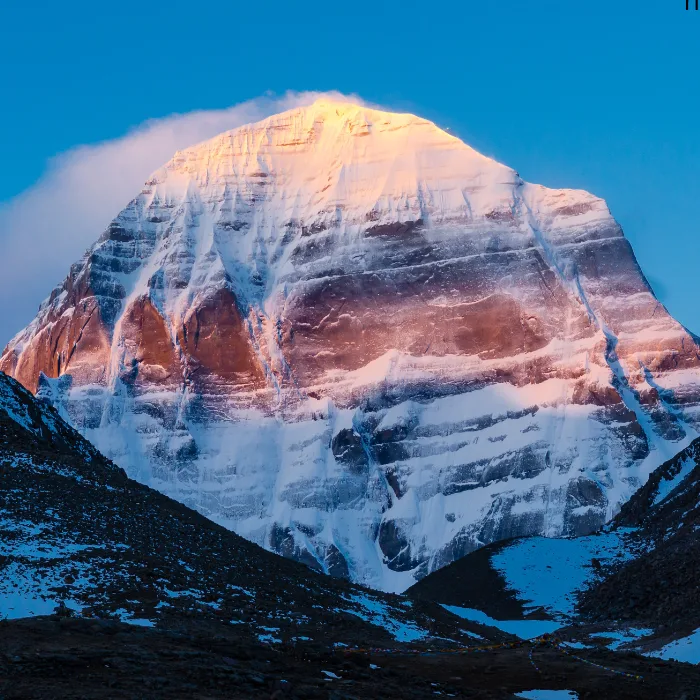
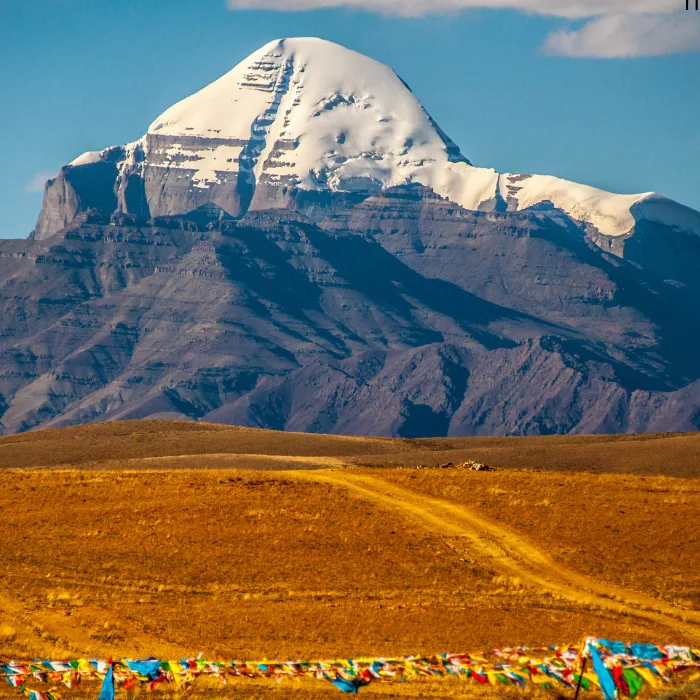
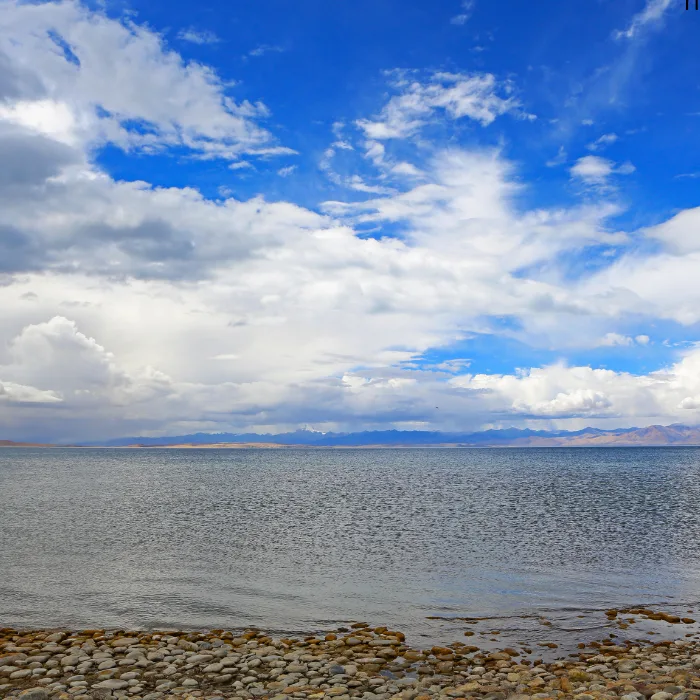

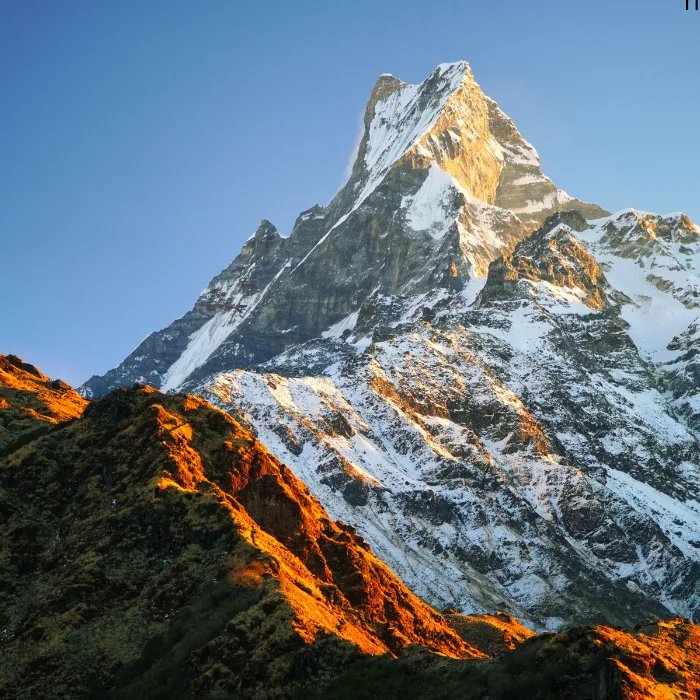


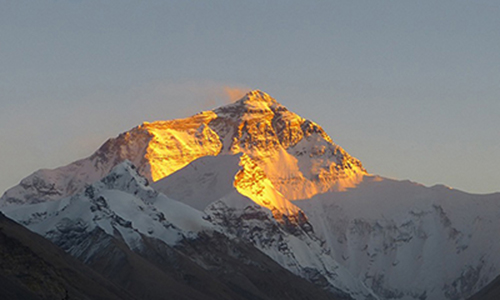


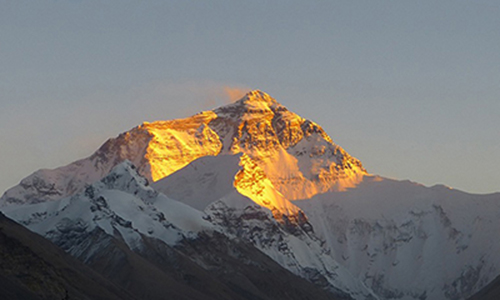
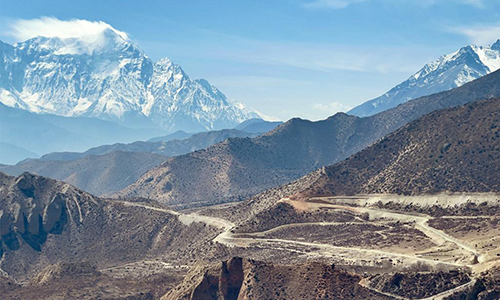
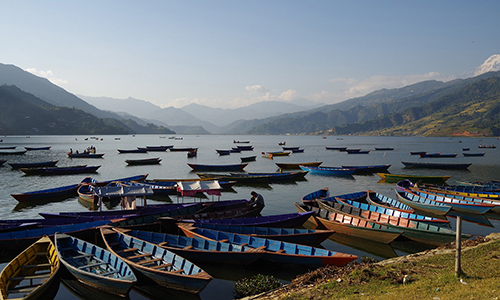

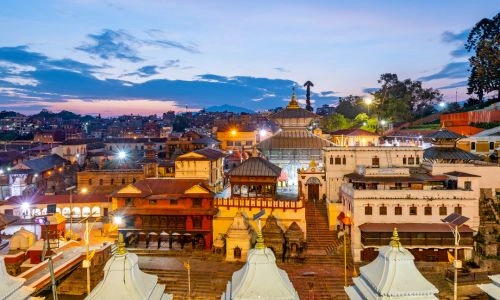
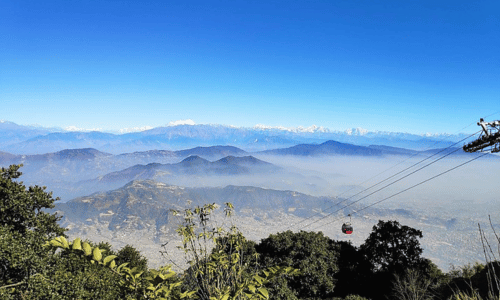
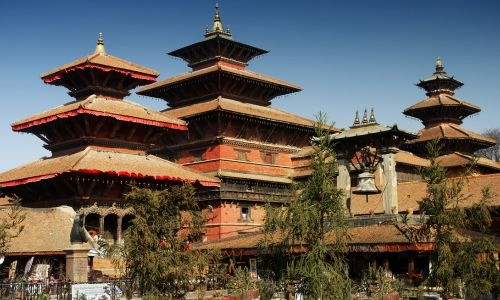
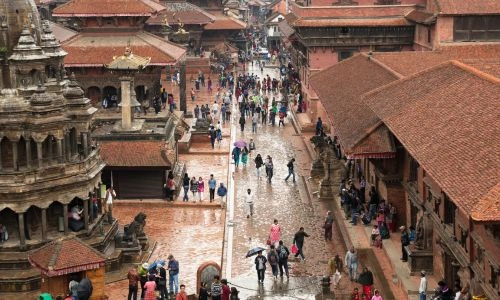


Michael Thompson
2025-06-16 10:46:55
The Kailash Manasarovar Tour was a life-changing journey, and Vyas Treks Nepal made it deeply meaningful and stress-free. From the preparation in Kathmandu to the actual yatra in Tibet, everything was organized perfectly. Our guide was calm, spiritual, and highly knowledgeable. The views of Mount Kailash and the serene Manasarovar Lake were truly divine. I felt spiritually uplifted and completely cared for. A sacred journey I will never forget!